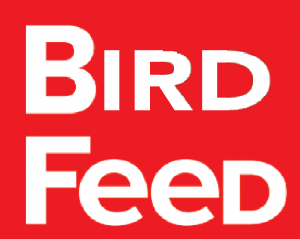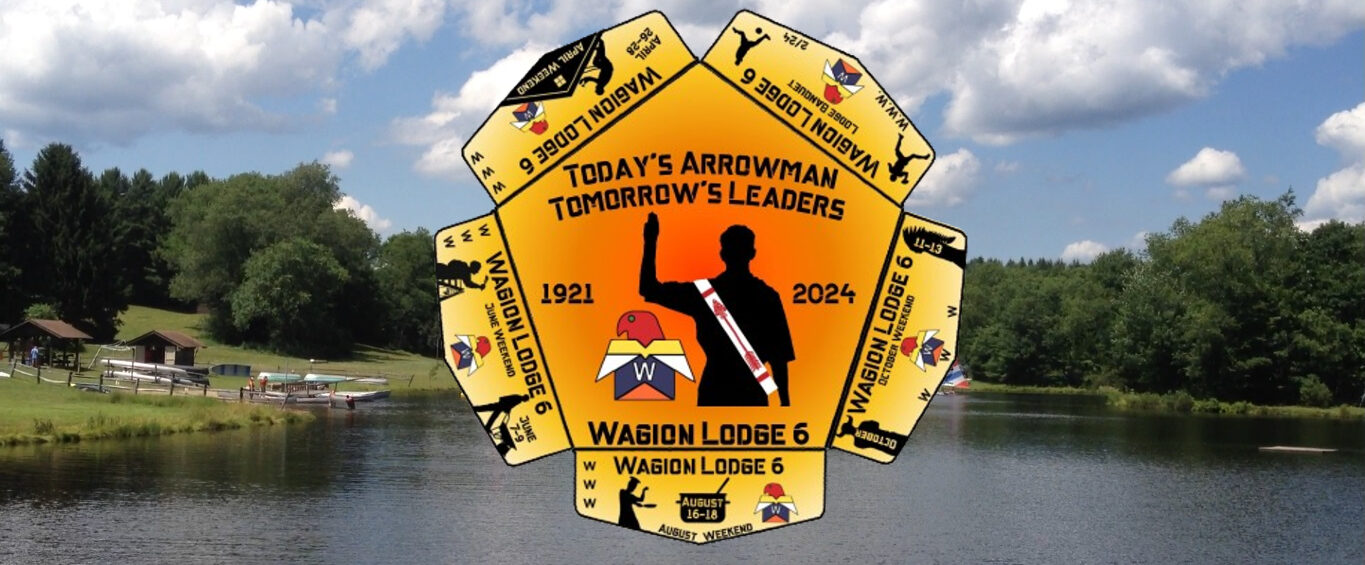
1. Mr. Dwayne Welling and many other long time brothers in the Order of the Arrow never had to take their Ordeal. Before 1948, it was common for every council to have their own lodge. The former Society of the Wigwam dissolved after the new Westmoreland-Fayette Council closed Camp Wildwood. At the time of the closing in 1949, all Wigwam members were given the opportunity to transfer as Ordeal members into Wagion Lodge #6. They had one year to do this. After one year they had to be elected and take the Ordeal in the normal manner. Although it was not compulsory for Mr. Welling to take his Ordeal, he decided to proceed through the process anyway. According to Mr. Welling, the Order of the Arrow had striking differences compared to his former Society of the Wigwam. (Source, Dwayne Welling)
2. “Wag’ ion” is actually the proper spelling of “Thunderbird” in Lenni Lenape. As well, this was the first spelling used in the lodge. However long ago, a patch company did not include the apostrophe in an order of patches, changing the spelling to “Wagion.” After that, it was decided to keep the accidental change. (Source, Dan Wright)
3. The first Order of the Arrow circle at Camp Conestoga was placed in the wooded area behind the rifle range and just behind the present-day Shawnee Campsite. The present circle was built in 1953 in preparation for the Area Fellowship Conclave held at Conestoga the following year. Other changes at that time included building a new shed for storage, cementing the stone altars, and planting trees originally from Camp Wesco. The lodge built the circle’s alter of stones from Camp Wesco, Camp Wildwood, and Camp Paul Bunyan, three previous camps of the now Westmoreland-Fayette Council (Source, Chuck Ferguson)
4. Only two patches in the history of the Order of the Arrow have officially been sanctioned to be worn on one’s sash. Neither of these patches include the “Legend of the Order” patch, which is commonly worn on the back of sashes by some members. Nevertheless, these patches do include commemorative patches for the 65th and 75th anniversaries of the founding of the Order of the Arrow. Two of these patches are in the possession of Mr. Richard Browning, two on sashes and two off sashes. Recently, it was announced for 2015, the Centennial Year of the Order of the Arrow, a Arrowman Service Award patch would be commissioned to celebrate the 100th anniversary of the founding of the Order. You can earn this patch by completing requirements outlined at oa-bsa.org, or ask Drew Colebank for more questions.(Source, Kenneth Hager and Richard Browning)
5. Dr. E. Urner Goodman and Carroll A. Edson in developing the Order of the Arrow program borrowed from the traditions and practices of several other organizations. Edward Cave’s 1914 Boy’s Camp Book was consulted for the concept of a camp society that would perpetuate camp traditions. College fraternities were also influential for their concepts of brotherhood and rituals, and the idea of new members pledging themselves to the new organizations. Inspired by Ernest Thompson Seton’s previous Woodcraft Indians program, American Indian lore from the Lenni Lenape tribe of Delaware Indians was used to continue their “Brotherhood of Cheerful Service. Other influences include the Brotherhood of Andrew and Phillip, a Presbyterian church youth group with which Goodman had been involved as a young man, and Freemasonry. It could be argued that the traditions and rituals of Freemasonry contributed more to the basic structure of the OA ritual than any other organization. In fact, there appears to be no known fraternal organization more faithful in form to Freemasonry than the Order of Arrow. Familiar terms such as “lodge” and “obligation” were borrowed from Masonic practice, as were most of the ceremonial structures and ritual formulae. Even the early national meeting was called a “Grand Lodge,” a Masonic reference. (Source, Thomas Colebank)
6. Uncas and Chingachgook from the legend of our Order are more than characters of a story. Uncas, lived 1588 to 1683, was a sachem of the Lenni Lenape or Mohegan Tribe (English spelling translation “Mohican”) who through his alliance with the English colonists in New England and other Delaware Indian tribes allowed for reigning peace in the area during the time of the Pequot War, Narragansett War, and until after King Phillip’s War. As told in the legend of our Order, this alliance was the creation of the “Brotherhood of Cheerful Service.” Uncas was bilingual in English and Mohegan. The name “Uncas” is a variant of the Mohegan term Wonkus, meaning “Fox.” The name “Chingachgook” is derived from Lenape xinkwi xkuk, meaning “Big Snake.” Professor William A. Starna, of SUNY Oneonta, says the initial “ch” sound would be pronounced more like the German guttural “h” than an English “ch.”
Much of Uncas and Chingachgook’s lives have been crafted into James Fennimore Cooper’s series of the Leatherstocking Tales, particularly The Last of the Mohicans. In the fictional novels, Chingachgook was a lone Mohican chief and companion of the series’ hero, Natty Bumpo. In The Deerslayer, Chingachgook married Wah-ta-Wah, who bore him a son named Uncas, but died while she was still young. Uncas, who was at his birth “last of the Mohicans,” grew to manhood but was killed in a battle with the Huron warrior Magua. Chingachgook died as an old man in the novel which makes him the actual “last of the Mohicans,” having outlived his son. According to some historians and legend, however, it was not Chingachgook, Uncas’ father, who was the “last of the Mohicans,” but, actually, Uncas himself. The Mohegan Tribe suffered major losses in the aftermath of King Phillips’ War, dislocating and separating much of the people. After innumerable relocations of the Mohegan/Lenni Lenape people westward into now reservations, today both the current Mohegan Tribe (who interestingly support themselves in a profitable chain of hotels and casinos, the Mohegan Sun, featured on the show Undercover Boss) and ancestors of the Lenni Lenape look to Uncas as their ancestral father.
Due to Uncas’ significance in United States history, President Jackson laid the foundation stone of a monument to Uncas in Norwich, Connecticut. In 1907, William F. Cody laid a wreath on Uncas’ monument as a commemoration to Uncas as the “Last of the Mohicans.” A two-masted wooden schooner, Diosa del Mar, was originally christened Uncas by the owning Vanderbilt family. Four United States Navy ships have been named USS Uncas. Uncasville in EasterConnecticut is named after him. Uncas Lake in Nahantic State Forest Lyme, CT is also named after the sachem. (Source, Drew Colebank)
BONUS: Talking about the legend of our Order, I bet you did not know that Tatchen’s grandfather’s and Nutiket’s father’s name from the Vigil Ceremony is Mihillusis.
